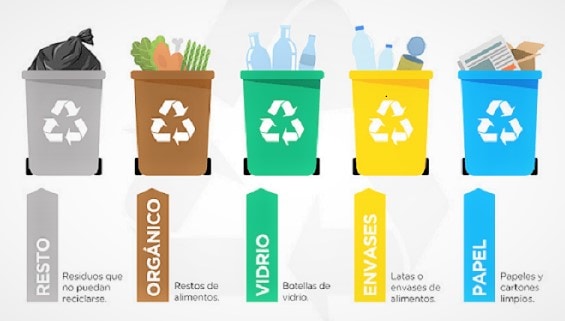The high demand for plastics in recent decades in all sectors, due to the high performance of this material, has led to the production in 2020 of 17.8 tons of packaging waste, according to data from the Plastics, the Facts report 2020 from PlasticEurope. This has led to a reconsideration of the end-of-life management of these materials, 42% of which are currently used for recycling, 39.5% for energy recovery and 18.5% for landfill, according to the same report.
The new legislations that come from the European Union are forcing to achieve increasingly rigorous objectives to avoid that the end of life of plastic is the landfill. Specifically, Directive 2018/852 that modifies Directive 94/62 / EC on packaging and packaging waste, adopts measures to meet new challenges and is aimed at prevention for the most effective measure to reduce resources and of environmental impact.
In more detail, this directive establishes that in 2025 50% of plastic packaging must be recycled and in 2030 55%. These criteria are being incorporated in the different member countries of the European Union through national legislation. Furthermore, the European Union is placing more and more emphasis on the incorporation of the principle of the waste hierarchy and, therefore, on prioritizing in this order in terms of prevention, reuse, recycling and recovery strategies for packaging. Likewise, in Europe, the European Green Deal was approved in 2020, the great green pact that includes the roadmap for the implementation of the circular economy in Europe through 50 specific actions, thus promoting a climate-neutral Europe in 2050 .
At the national level, the appropriate measures have been proposed to achieve the objectives set by Europe, such as the draft law for the Royal Decree on packaging and packaging waste of September 2021, which, following Directive 2018/852, has as an objective prevention as a measure to reduce the generation of packaging waste. This project anticipates points such as the potentialization of the eco-design of packaging and the prevention of waste, the reuse of both domestic and commercial packaging and the marking and information to be given to consumers of recyclable packaging. will achieve progress in the development of new processes and routes for the recovery of waste fractions that are not currently being recycled. Current mechanical recycling systems have limitations. For example, the high degree of contamination of packaging waste – which prevents its reuse for applications in contact with food by some polymers-, or the recovery of packaging with more complex structures, such as those from packaging with a multilayer structure .
With regard to plastics decontamination processes, there has been a great advance in recycling, mainly those intended for high value-added applications such as direct contact with food, such as polyolefins ( PO), mainly PP (polypropylene) and PE (polyethylene), which are used as packaging materials for food. Currently, the processes proposed for recycling polyolefins are based on those developed for PET. Polyolefins have different properties and have poorer barrier properties and greater ease of migration for the absorption of pollutants. In addition, due to the low thermal stability they produce a greater amount of degradation products.
The efficiency of decontamination is demonstrated through challenge tests, where the materials are exposed to known contaminants in the most unfavorable situation that could occur in their useful life. After this process, a recycling process is simulated and then analyzed to demonstrate the efficiency of this decontamination.
The Itene technology center contributes to improving recycling rates through the development of different advanced processes for the recovery of this waste. This is the case of the Recicom-Plasvalor project (2020-2021), in which processes have been developed for the enzymatic degradation of non-recycled packaging plastics and the delamination of multilayer structures through chemical recycling (solvolysis). In addition, through more advanced technologies, different fractions have been decontaminated with green solvents, such as carbon dioxide or other solvents in the vapor phase.
Thanks to this project, financed by the Valencian Institute of Business Competitiveness (Ivace), solutions have been developed that allow recycling companies to implement and scale new routes to recover waste that until now have not been recycled, so that they will be able to exercise a great positive impact on the reduction of the ratios of deposition in landfill.
Another of the great problems of recycling plastics is the great variety of multilayer trays in the food sector, which causes a barrier when it comes to being reintroduced into the value chain, given that both the identification technology and the separation technology their sheets to be recycled separately are not completely efficient.
Multilayer trays are usually made up of layers of material such as PP, PE and PET (polyethylene terephthalate), to which other additional layers are added with barrier properties of other types of polymers PA (polyamide), PVOH (polyvinyl alcohol) to provide protection against different external agents that can cause the deterioration of what they contain, such as oxygen and humidity, controlling the interior atmosphere. In addition, the polymer layers need a bond between them and adhesives are used.

